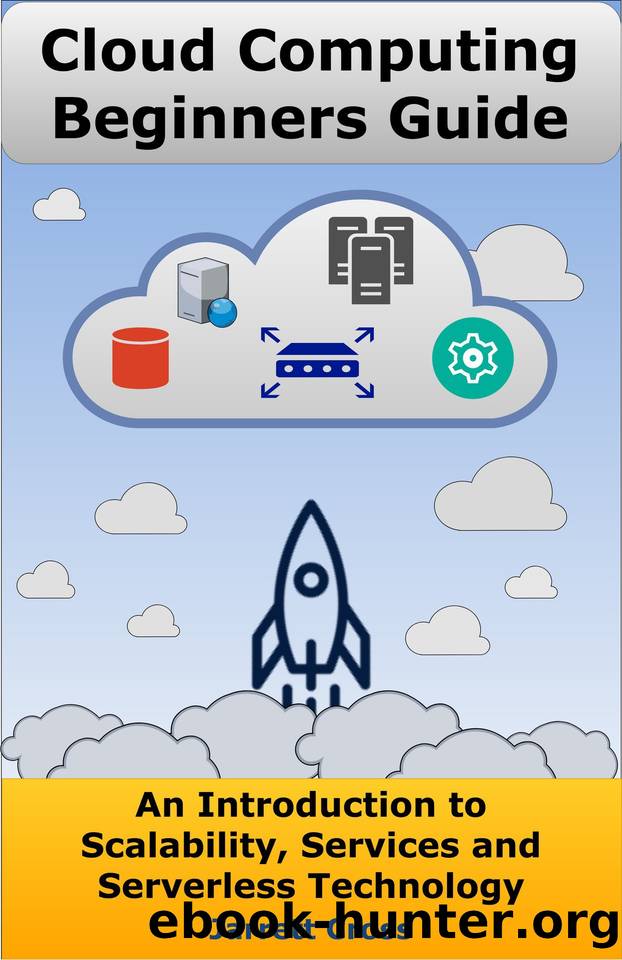Cloud Computing Beginners Guide: An Introduction to Scalability, Services, and Serverless Technology by Cross Jarrett

Author:Cross, Jarrett [Cross, Jarrett]
Language: eng
Format: epub
Published: 2018-08-16T16:00:00+00:00
Architecting in the Cloud
While a tremendous amount of thought and preparation goes into selecting a cloud provider and developing a deployment strategy, that’s only the beginning! Even after you’ve built your application stacks in a cloud environment, there are still a number of factors to consider. Just as there are a number of components that all have to integrated and maintained together in an on-premise data center, cloud-based environments present their own management variables. Over the course of the next few chapters, we will consider some of those variables, including architecting considerations, security plans/controls, and monitoring resources running in cloud-based environments. While each of these will vary to an extent based on the solution you choose to implement, my goal is to have you routinely evaluate your environment’s health in these areas of operation.
To begin with, let’s consider some fundamental principles of architecting in the cloud. Unlike managing on-premise hardware, you will probably never touch a piece of equipment that is running your cloud environment – especially if it is hosted by a third party provider. Consequently, the way you approach building your infrastructure in a cloud-based environment will differ from an on-premise situation. Cloud computing provides you with the flexibility to pursue efficiency more aggressively than you would be able to with physical hardware. In a physical environment, it may be quite some time before you begin to realize efficiency with a solution after a large capital expenditure. However, with cloud computing, you are able to purchase only what you think you will need, then scale up or down accordingly. In stark contrast to a physical infrastructure change, cloud-based changes can be almost instantaneous! When architecting for the cloud, be sure to take advantage of those efficiency gains. Let’s consider an example.
Imagine that you have a data warehousing application running in your on-premise environment, and you’re planning to move it up to your cloud provider. You might initially take inventory of the hardware it’s running on, then consider mirroring that up in the cloud with an identical virtual server instance. In many cases, while this might work, it is going to be significantly more expensive. Additionally, you might have purchased hardware powerful enough to allow for sustained growth over time. Because you are usually able to scale virtual server instances up or down fairly quickly, you would want to identify the smallest instance you could safely run the application on, giving consideration to potential spikes in traffic. Over time, you can continue scaling the instance up as needed. All this considered, you may not even need to go the route of a virtual server instance. Does your cloud provider offer a managed data warehousing service? If you decide the virtual server setup is the way to go, is there a way for you to offload some of the routine compute needs to a fleet of smaller server instances that you can quickly boot up, use for a short time, then boot back down? This might be an option that saves you more money and allows you to get by with an even smaller base server.
Download
This site does not store any files on its server. We only index and link to content provided by other sites. Please contact the content providers to delete copyright contents if any and email us, we'll remove relevant links or contents immediately.
Grails in Action by Glen Smith Peter Ledbrook(9163)
Sass and Compass in Action by Wynn Netherland Nathan Weizenbaum Chris Eppstein Brandon Mathis(8808)
Azure Containers Explained by Wesley Haakman & Richard Hooper(7440)
Configuring Windows Server Hybrid Advanced Services Exam Ref AZ-801 by Chris Gill(7431)
Kotlin in Action by Dmitry Jemerov(7263)
Running Windows Containers on AWS by Marcio Morales(6980)
Microsoft 365 Identity and Services Exam Guide MS-100 by Aaron Guilmette(5398)
Microsoft Cybersecurity Architect Exam Ref SC-100 by Dwayne Natwick(5208)
Combating Crime on the Dark Web by Nearchos Nearchou(4978)
The Ruby Workshop by Akshat Paul Peter Philips Dániel Szabó and Cheyne Wallace(4667)
Management Strategies for the Cloud Revolution: How Cloud Computing Is Transforming Business and Why You Can't Afford to Be Left Behind by Charles Babcock(4527)
Python for Security and Networking - Third Edition by José Manuel Ortega(4232)
The Age of Surveillance Capitalism by Shoshana Zuboff(4209)
Learn Wireshark by Lisa Bock(4114)
The Ultimate Docker Container Book by Schenker Gabriel N.;(3886)
Learn Windows PowerShell in a Month of Lunches by Don Jones(3681)
DevSecOps in Practice with VMware Tanzu by Parth Pandit & Robert Hardt(3565)
Windows Ransomware Detection and Protection by Marius Sandbu(3540)
Blockchain Basics by Daniel Drescher(3507)
